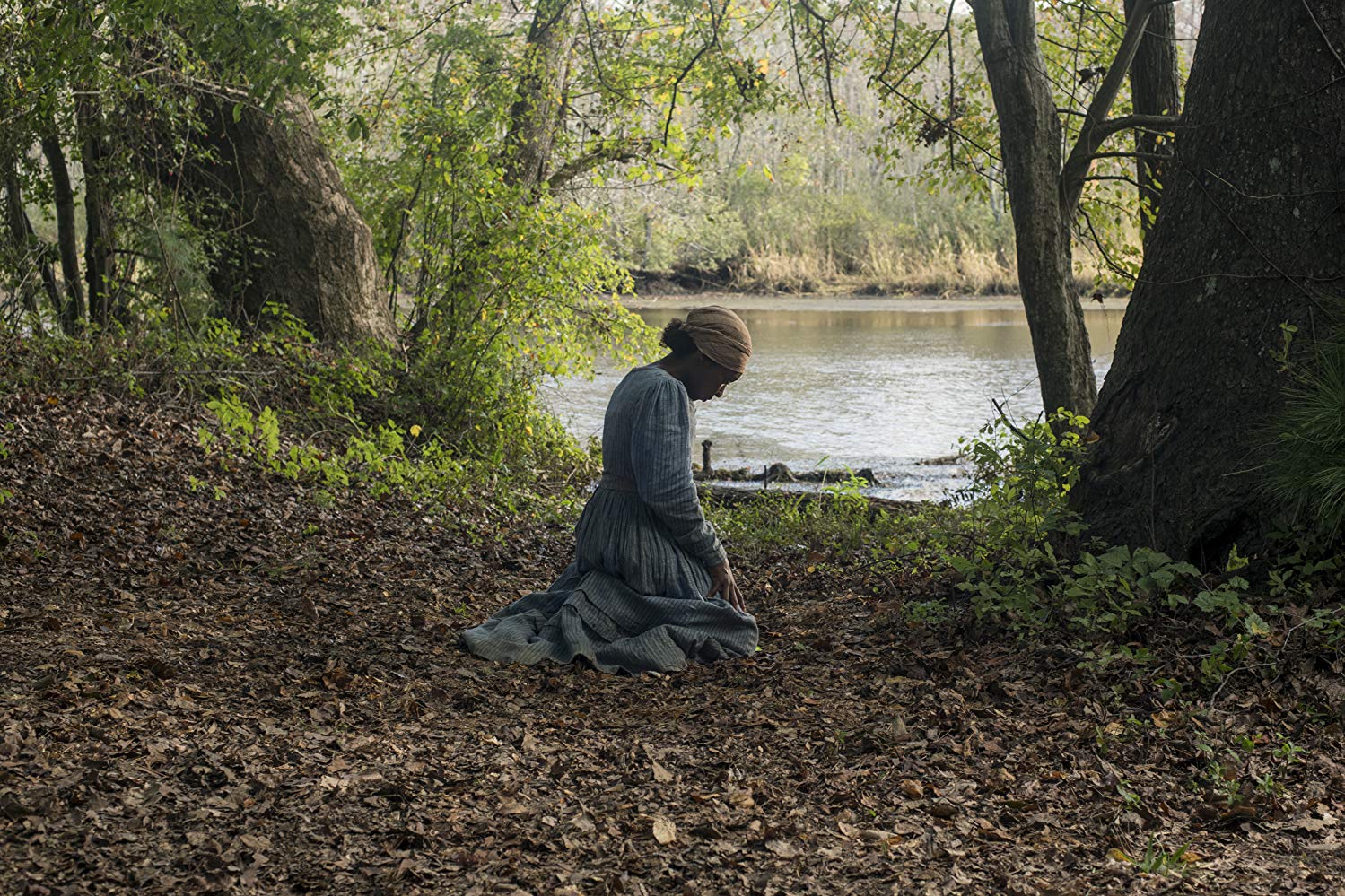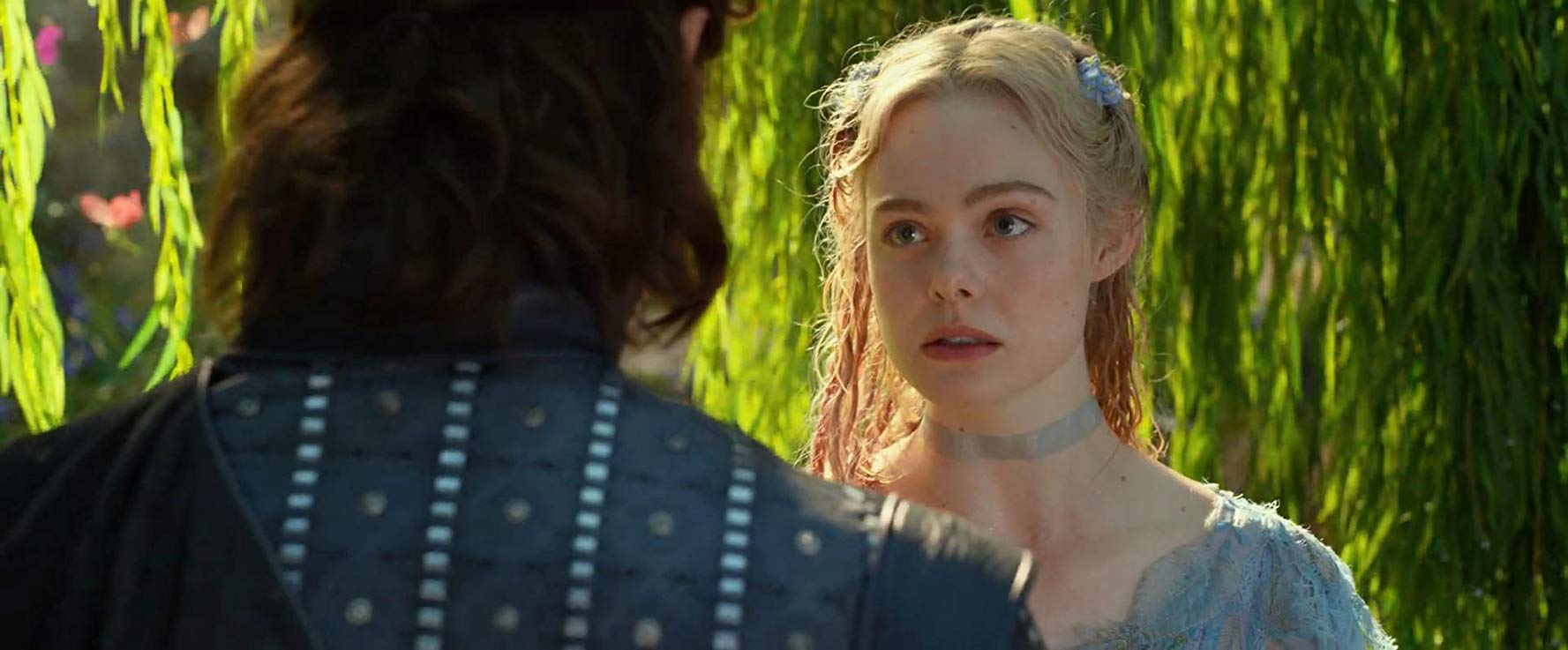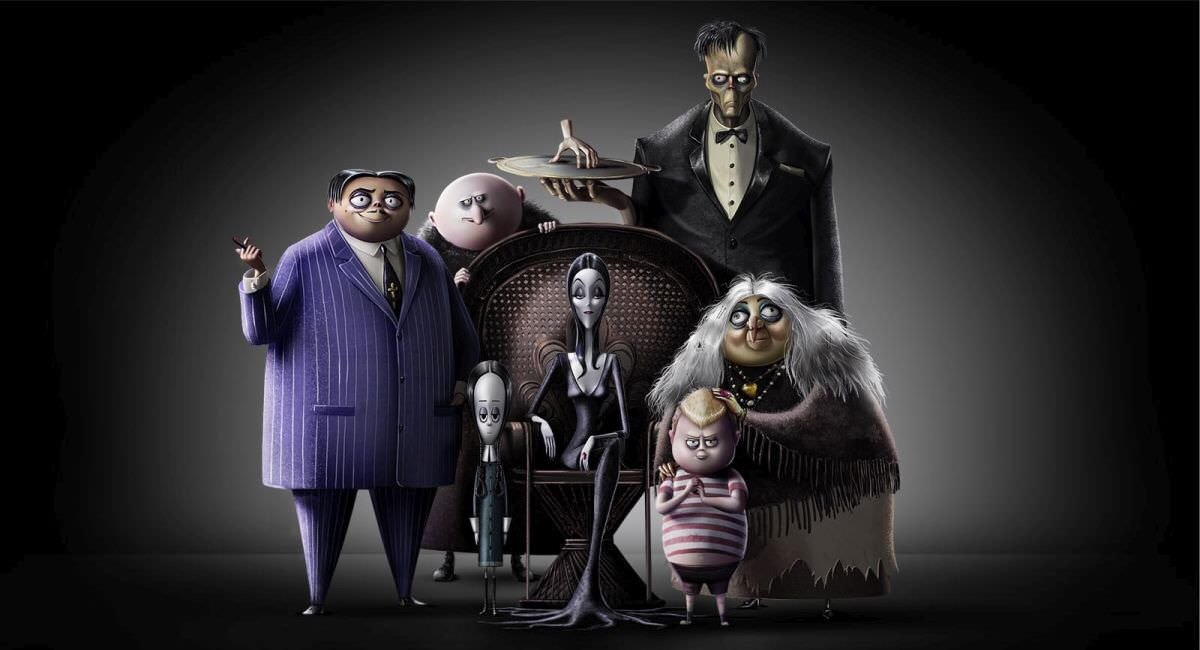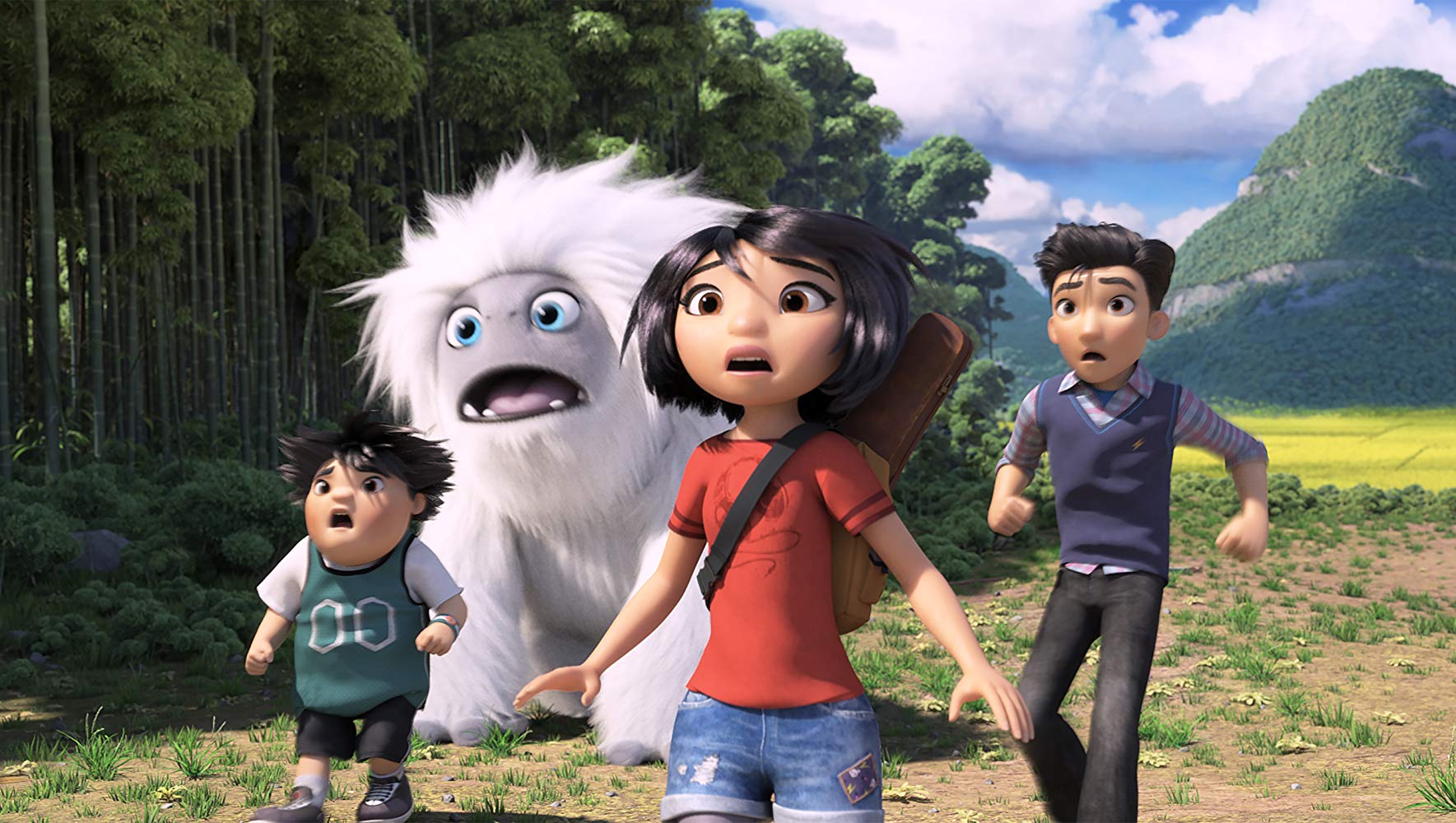
by Michael Foust | Nov 1, 2019
The biographical film Harriet (PG-13) opens this weekend, telling the story of former slave and heroic abolitionist Harriet Tubman.
“Minty” is a determined and smart Christian woman living in
1840s Maryland.
She’s also a slave. Her mother and father are slaves. Her
siblings are, too. During the day, they toil the field under the watchful eyes
of their owner, a wicked man who sometimes whips and beats them to maintain
“order.” At night, they recover and rest, preparing for the next day’s work
under the hot sun.
They sing spiritual songs to stay sane—songs about a future
Promised Land ruled by a loving God who blesses his people.
Minty, too, sings about the Promised Land, but she also has
an earthly goal in mind.
“I wanna be free,” Minty tells a friend.
She doesn’t have a plan to escape the plantation, yet she does have the resolve it will take to
get to Philadelphia, which is about 100 miles away and—for safety reasons—must
be accessed by foot.
Finally, on a dark and starry night while her master is
sleeping, Minty sets out on a long journey. Her pastor—a black man—tells her to
follow the north star to ensure she doesn’t get lost. He also gives her
spiritual advice—advice she takes to heart.
“Trust in God,” he says.
The biographical film Harriet
(PG-13) opens this weekend, telling the story of a slave named Minty who
escapes and changes her name to Harriet Tubman once she reaches the
anti-slavery society in Philadelphia. It stars Cynthia Erivo (Bad Times at the El Royale) as Tubman,
Leslie Odom Jr. (Murder on the Orient
Express) as abolitionist William Still, Janelle Monáe as hotel owner Marie
Buchanon, and Joe Alwyn (Operation Finale)
as Gideon Brodess, a member of the family that bought Tubman.
The film follows Tubman as she escaped, alone, by traveling
a secret route known as the Underground Railroad—a route filled with unsung
heroes who lived in slave states but worked to give slaves freedom. Eventually,
Tubman herself became a “conductor” on the Underground Railroad and headed back
to Maryland to free her family and other slaves. When the Civil War started,
she also served as a Union spy and the leader of an armed expedition.
Harriet isn’t a faith-based film in the
modern use of that term—its rough content proves that—but it nevertheless
includes more faith-based content
than you’ll see in most mainstream films. The movie depicts Tubman as a
Christian woman who was guided by her faith and who relied on prayer (and
sometimes visions) to determine God’s will.
When she arrives in Philadelphia and is asked who
accompanied her, she responds it was “just me and the Lord.” When she is
running away from slave catchers, she often pauses in the forest to pray. She
believed God supported her cause. She was right.
Warning:
minor/moderate spoilers!
(Scale key:
none, minimal, moderate, extreme)
Violence/Disturbing
Moderate. A slave is hit with a gun, and we see a bloody gash
across his eye. Slave catchers use scent hounds to track slaves. We see scars
(from whippings) on the backs of Tubman and other slaves. Female slaves are
slapped several times in the film. A free black woman is beaten and kicked in
the head. A man is shot in the head and dies. Throughout the film, slaves are
treated like animals in what is perhaps the movie’s most disturbing
element.
Sexuality/Sensuality/Nudity
Minimal. Tubman and her husband kiss several times. It is
implied that Gideon previously had a sexual relationship with Tubman. We see
Tubman’s scarred back as she prepares to take a bath. (Nothing else is seen.)
We hear the word “brothel.”
Coarse
Language
Moderate. N-word (12), b–ch (4), h–l (5), d–n (2), GD
(1), f-word (1), OMG (1).
Other Stuff
You Might Want To Know
A slave catcher warns Tubman not to commit suicide.
Life Lessons
The Gospel
brings hope: Faith
was the source of strength for Tubman and other slaves. We see them sing
spiritual tunes and pray throughout the movie.
Scripture
can be twisted: The
slave owners told the slaves that God ordained slavery. Tubman and the other
slaves knew better.
Change
requires sacrifice: Slavery wouldn’t have been abolished in the U.S. without
heroes like Tubman—men and women who were willing to die for the cause.
Worldview/Application
The film opens with the scene of an outdoor church service—and
a black minister quoting the Bible to tell the slaves to obey their masters.
The minister, of course, was only following the orders of the white masters,
who sat in the background nodding their approval.
But Tubman and the others knew their Bible better than their
owners did.
The real-life Tubman knew that a Gospel based on grace,
mercy, freedom and salvation couldn’t—and didn’t—condone slavery. She knew that
in Christianity, there was “neither Jew nor Greek, there is neither slave nor
free, there is neither male and female” because we are “all one in Christ
Jesus” (Gal. 3:28). She read stories about God freeing the Hebrews from
slavery, and she knew God didn’t want people in shackles.
As she tells Gideon, “God don’t mean (for) people to own
people.”
What Works
The plot. The infusion of faith. Also, Cynthia Erivo is
impressive as Tubman.
What Doesn’t
The slave owners come across as being caricatures. During
some moments, it seems almost like a parody.
Discussion
Questions
1. What role did Tubman’s faith play in her desire to be
free? What role did it play in her rescuing of others?
2. What does the Bible say about slavery? What would you say
to someone who claims it supports slavery?
3. Name five positive character traits of Harriet Tubman.
4. How did Tubman stay encouraged when all hope seemed lost?
Entertainment rating: 3.5 out of 5
stars. Family-friendly rating: 3 out
of 5 stars.
Harriet is
rated PG-13 for thematic content throughout, violent material and language
including racial epithets.

by Michael Foust | Oct 18, 2019
The Disney film ‘Maleficent: Mistress of Evil’ opens this weekend—the second chapter in a modern retelling of the ‘Sleeping Beauty’ story.
Aurora is an optimistic and kind young woman who is queen of
the Moors, a magical land where fairies roam and plants obey orders.
She’s also an idealistic leader who believes her subjects
can broker peace with Ulstead, a bordering land inhabited by creatures—humans—who
have long been at odds with the Moors.
Yes, Aurora is a human, too, but she was raised by fairies.
She even considers an evil fairy named Maleficent to be her fairy godmother.
Aurora, it seems, is the ideal queen to bring the two sides
together—a notion that is bolstered when Philip, the son of the king of
Ulstead, asks her to marry him.
But then Maleficent forbids the marriage. And then she goes
on an out-of-control rampage destroying parts of the Ulstead castle and
apparently killing the king, too.
It appears the two kingdoms will be at war—forever.
“Love doesn’t always end well,” Maleficent says.
The Disney film Maleficent:
Mistress of Evil (PG) opens this weekend, starring Angelina Jolie (Kung Fu Panda series, Salt) as Maleficent, Elle Fanning (Maleficent, Astro Boy) as Aurora, and
Michelle Pfeiffer (Ant-Man and the Wasp)
as Queen Ingrith of Ulstead.
The movie is a sequel to the 2014 movie Maleficent, which was loosely based on the 1959 animated film Sleeping Beauty. Both Maleficent films, though, add major plot
twists the box-office original did not.
Much of Mistress of
Evil is thematically dark, even though you’ll leave the theater feeling
upbeat (More on that below, if you’re curious). Visually, the film is stunning,
thanks to colorful landscapes, a larger-than-life castle, cute and
other-worldly creatures and CGI effects that make you feel like you’re there.
But that realism has a tradeoff for young children: Much of
the film will be too violent and too disturbing for young children, if not for
a few older ones, too.
Warning:
moderate/major spoilers!
(Scale key:
none, minimal, moderate, extreme)
Violence/Disturbing
Moderate. Maleficent, with black wings and black horns, may
scare children. The film opens with a nighttime scene in which Maleficent
corners two men who had snuck into her kingdom. Maleficent—who can control
nature—uses tree roots and vines to capture them. Later, we hear someone call
her a witch. We watch her shoot green lightning-type bolts from her fingers at
people. We see someone shot (with a crossbow) and fall into the ocean. Winged
creatures that look a lot like Maleficent rally to go to war with the humans.
We watch as fairies are locked in a room and many of them killed with a red
powder in what looks like an attempted genocide. A secondary character dies; we
watch his spirit leave him. The film ends with a major battle, although it’s
not bloody or ultra-violent. Finally, alien-like creatures fill the film. Most
of them are cute, although some are quite ugly. Sensitive children might have nightmares
after seeing them.
Sexuality/Sensuality/Nudity
Minimum. Aurora and Phillip kiss two or three times.
Coarse
Language
None.
Other
Positive Elements
BothMaleficent movies spotlight Maleficent’s
relationship with Aurora. In the second film, Maleficent makes many
applause-worthy decisions as a parent/godmother.
Other Stuff
You Might Want To Know
The film showcases magic, even if we don’t see cauldrons and
broomsticks. Maleficent uses magic for bad and for good.
Life Lessons
Redemption
is always possible: This film captures that theme beautifully, even if we see a
lot of carnage along the way.
Self-sacrifice
makes the world better: The film’s final five minutes include a plot twist affirming
this message.
Looks can be
deceiving: One
major character—to outsiders, at least—appears good, when, in fact, she is evil
and self-centered.
Peace
requires selflessness: The two kingdoms failed to live in harmony because of a
lack of trust—and in some cases, hatred. Eventually, they come together.
Worldview/Application
The world of Maleficent:
Mistress of Evil is one of good and evil, although Maleficent herself seems
to have the greatest power in that universe. She controls nature and is told,
“In your hands you hold the power of life and death—destruction and rebirth.”
(Although, oddly, we hear characters talk about a “christening.”)
It’s an unbiblical worldview that may be worth discussing
with children on the ride home.
The film’s core plot, though, has little resemblance to the
original story. Evil people don’t stay evil, and supposedly good people turn
out to be bad. The film’s final few moments even have a redemptive ending.
Unfortunately for families with small children, though, we
have to wade through a ton of scary scenes and ugly creatures to get to that
moment.
What Works
The animation. The ending. The chemistry between Maleficent
and Aurora.
What Doesn’t
The story. It lacked the charm of the best Disney movies.
Discussion
Questions
1. What lessons about life does the character of Maleficent
teach us?
2. Is peace always possible? What is required for peace
between nations? Between individual people?
3. Why was Queen Ingrith filled with hatred?
4. What does the movie teach us about redemption?
Entertainment rating: 2.5 out of 5
stars. Family-friendly rating: 3.5
out of 5 stars.
Rated PG for intense sequences of fantasy action/violence and brief scary images.
Photo credit: Disney

by Michael Foust | Oct 11, 2019
Gomez Addams is a protective father who only wants what is best for his children, Wednesday and Pugsley.
Or, maybe he wants the worst.
Whatever the case, Gomez and his family — including his
wife Morticia and his brother Fester and — are a tight-nit bunch. They play
together. They eat together. They defend one another.
They’re also a strange
bunch. For starters, the Addams live in a run-down mansion that always seems to
reside under a gray cloud. They also like everything the outside world hates.
Like rainy days. And bats. And dust. And dark, depressing clothes. Then there’s
their connection to the spirit world. They communicate regularly with deceased
relatives, who — get this — send
them gifts.
They are a macabre family living their dream life.
But then Wednesday — their teen girl — begins wondering
what the outside world is like. And then the Addams learn of an even bigger
threat to their dark-and-dreary life: A home-improvement show that is being
filmed at the bottom of their hill in a new town. And then the star of the show
volunteers to improve their home.
Can their weird way of life survive these new challenges?
The animated film The
Addams Family (PG) opens this weekend, starring Oscar Isaac (The Force Awakens) as Gomez, Charlize
Theron (Snow White and the Huntsman)
as Morticia, and Bette Midler (Beaches,
Murphy Brown) as Grandma.
The film is a new take on the story that began with a series
of comic strips and was popularized with a 1960s TV series. It follows a family
that does everything the opposite of the real world. When it’s time to dust the
house, they blow more dust into the
room. When they drop Wednesday off at school, they say, “Do your worst.” When
they see people laughing, they wonder what’s wrong.
The Addams
Family
is only the latest children’s film to spotlight the spooky world, following the
Hotel Transylvania series and the Goosebumps movies.
The Addams
Family
may be more family-friendly than Goosebumps
(that’s up for debate), but it’s far darker than any of the Hotel Transylvania movies. It’s so dark
that the word “macabre” made it into the film’s rating (which says it’s PG for
macabre and suggestive humor, and some action.)
Warning:
minor/moderate spoilers!
(Scale key:
none, minimal, moderate, extreme)
Violence/Disturbing
Moderate. The film is filled with Looney Tunes-type violence that’s played for laughs, but due to the
macabre nature of the family, it seems more disturbing. The funny-but-spooky
“Thing” is nothing more than a disembodied hand with a mind of its own.
Pugsley, the boy, often shoots his uncle with either arrows or small bombs as
part of “target practice.” (The uncle applauds him each time.) Pugsley climbs
down the mouth of their pet lion to retrieve his meal. When a red balloon lands
on the family’s property, Morticia jokes that it’s typically held by a “murderous
clown.” Wednesday buries her brother in a grave, apparently as a joke. (He
quickly digs out.) Lurch the butler, who looks a lot like Frankenstein, answers
the door with a deep-voiced and eerie “you raaaang?” Pugsley briefly climbs the
walls — his pupils a bright white. A family member jokes about a gift they
were given “from dead relatives.” Wednesday wonders why her vanity mirror —
unlike a smartphone — can hold only “14 souls at a time.” We hear a joke about
embalming fluid. A bat bites Morticia’s neck, and we hear a straw-sucking
sound. Morticia, wanting to get to know Wednesday better, invites her to a “tea
and seance” in the grave. Mortician then communicates with her deceased
parents. She also uses a ouija board. The final scene includes multiple things
blowing up.
Sexuality/Sensuality/Nudity
Minimal. Morticia’s dress shows a bit of cleavage. A couple
briefly kisses at the end.
Coarse
Language
Minimal. One or two barely heard OMGs.
Other
Positive Elements
Sure, Mr. and Mrs. Addams love all things dark, but they
also love their children.
Other Stuff
You Might Want To Know
Wednesday goes to a public schools and sees a friend,
Parker, bullied. (The other girl places a sandwich and drink in Parker’s
backpack.) At the school, Wednesday creates a device to bring dead frogs
(intended for dissection) back to life.
Life Lessons
Don’t put
work before family: Margaux Needler, the TV host, ignores her teen daughter,
Parker, who essentially grows up without a caring mother in her life.
Let your
kids be themselves:
Of course, this has its limits, but in The
Addams Family, the parents want their children to be exactly like them.
They fail to see Wednesday and Pugsley as unique individuals.
Don’t judge
people on appearance: This is the film’s primary message, and it’s driven home
in the movie’s final minutes. It’s a good lesson for children to learn.
Worldview/Application
I watched the black-and-white, live-action version of The Addams Family while growing up. It
was funny — and original.
Since then, though, I’ve become uncomfortable with a story
that makes jokes about seances, ouija boards and the dead. Those are things
Scripture explicitly tells us not to
embrace.
The Addams
Family
trivializes the dark world. It makes it seem fun, humorous and attractive —
when it’s just the opposite. (Morticia talks to her dead parents much like we
would call a real-world person on an iPhone.)
No doubt, much of the film humor is family-friendly and
appropriate. (Who wouldn’t laugh at a person “dusting” a house by making it dustier?) But much of the humor is not.
Sponsors
Hershey’s, IHOP, Goodwill, Tombstone, General Mills, Cost
Plus World Market and Scholastic.
Discussion
Questions
1. Is the dark world presented as good or bad?
2. What does the Bible say about communicating with the
dead?
3. Do you like macabre movies? Why or why not?
4. Are macabre films ever OK?
5. What lessons can we learn from the relationship between
the Addams parents and their children?
Entertainment rating: 2.5 out of 5
stars. Family-friendly rating: 3 out
of 5 stars.
Rated PG for
macabre and suggestive humor, and some action.

by Michael Foust | Sep 27, 2019
The DreamWorks animated film Abominable opens this weekend, telling the story of a girl who sets out on a quest with two neighbors to return a yeti to its home.
Yi is a busy young woman living with her mother and
grandmother in Shanghai, China.
During the day, she makes cash doing odds jobs—taking out
trash, walking pets through the city, and babysitting small children
At night, though, she lays in bed, thinking about how things
used to be when her father was still alive. Sometimes, she even sneaks up on
the roof to play his old violin.
“She misses her dad,” her grandmother says.
If only Yi had a close friend.
Perhaps a
mythical hairy creature would help her cope. And that’s exactly what happens.
One night while playing a favorite tune on the roof of her
apartment building, Yi sees a huge, white-haired creature hiding in the
shadows. It is a …. yeti.
With an armed helicopter chasing this beast, Yi helps it
hide, and then bandages its wounds and feeds it.
“I don’t know where you come from, but you sure don’t belong
here,” she tells him.
Can Yi help the yeti find his home before he is captured and
killed by researchers?
The DreamWorks animated film Abominable (PG) opens this weekend, telling the story of a girl who
sets out on a quest with two neighbors to return the yeti, named Everest, to
his mountainous home. (You guessed it: He’s from Everest.)
It stars Chloe Bennet (Agents
of S.H.I.E.L.D.) as Yi, Albert Tsai (Coop
and Cami Ask the World) as her friend Peng, and Tenzing Norgay Trainor (Liv and Maddie) as another friend,
Jin.
Abominable is similar to other
child-meets-creature-and-learns-lesson movies of the past, including E.T., Pete’s Dragon and Home. Although it may not be as
entertaining as those other films, it’s still pretty good, and it’s filled with
positive messages about healing from grief. Moviegoers who have lost a family
member recently will share Yi’s pain.
The yeti—in case you’re not up to speed—is the mythical
creature that supposedly lives in the snow of the Himalayan Mountains. He’s
often called the Abominable Snowman.
In Abominable, Yi
and the Yeti have similar needs. They’re each lonely. They’re each running away
from something (she from reality; he from the bad guys). And they’re each
longing for something significant (her—a closer relationship with her family;
him—his home in Mt. Everest).
The movie is mostly family friendly, although it does have a
few worldview elements that will concern some parents (more on that
below).
Warning:
minor/moderate spoilers!
(Scale key:
none, minimal, moderate, extreme)
Violence/Disturbing
Minimal/moderate. The movie opens with Everest being chased
by the bad guys. (They had captured him and stored him in a research lab.) He
escapes and then is hit by a car, but survives. Everest growls several times in
the film, but he’s mostly a lovable creature who just wants to play. (He’s a
yeti child.) Those bad guys don’t give up and chase Everest throughout the film
with tranquilizer guns. We see unmanned drones corner Yi and her friends. The
film’s ending might frighten sensitive children. (Yi is pushed off a tall
bridge and is presumed dead, but survives.)
Sexuality/Sensuality/Nudity
Minimal. Jin’s popularity among teens girls is a running
joke. We see him preparing for a date.
Coarse
Language
None. Two instances of “oh my gosh.” One “you idiot.”
Other
Positive Elements
Yi’s mother and grandmother truly care for her. They’re also
patient with her when she is frustrated with life.
Other Stuff
You Might Want To Know
The grandmother jokes that she only plays basketball “for
money.” Everest the yeti is magical.
Peng and Yi say they learned that the stars are “ancestors
who watch over us.”
Yi, while on her way to Mt. Everest, stops at the Leshan
Giant Buddha, a Mt. Rushmore-type sculpture of Maitreya (or the Buddha yet to
come).
Life Lessons
Friendship
is a blessing: Yi
needs a friend, and she finds it in Everest and two neighbors.
Arrogance is
not attractive: Yi’s
neighbor/friend, Jin, considers himself a lady’s man who dresses like he
belongs in a boy band. He’s also self-centered.
Grief is a
process: The
movie doesn’t tell us how long Yi has been without her father, but it implies
it’s been several months, if not longer. Yi carries around a picture of her
father in her violin case. She acknowledges she’s stayed busy to suppress the
pain—and has yet to stop and cry.
Children
need a family:
Yes, teens sometimes act embarrassed around parents, but Abominable affirms the necessity of the family structure, including
that of a mother and father. (Her dad formerly played the violin for her.)
Worldview/Application
First, the good. Abominable,
much like Pete’s Dragon, can teach
children a simple lesson about our world: Science can’t explain everything.
“Yetis don’t exist,” Jin tells Yi. But in her world, they do. Similarly, in our
world, people often reject the existence of God, pointing to (supposedly)
scientific evidence. Kids innately know better.
Now, for the problematic. Abominable isn’t as overt in its unbiblical worldview as Moana or Coco, but it’s still there. We learn that Yi’s father longed to
take her to the Leshan Giant Buddha statue, and then we see it up close, as she
takes her time exploring it. (“What’s that?” my 11-year-old son asked. “A false
God,” I told him in a two-second movie explanation.) We also hear Peng say that
stars are “ancestors who watch over us.” Except for that one line, little-to-nothing
else is heard about traditional Chinese religious beliefs.
Everest the yeti is magical, and he is able to control
nature—including the growth of flowers and other plants—simply by closing his
eyes and humming. (His body glows, too.) We are told he “talks to nature.”
If you take the children, then be prepared for a worldview
discussion on the ride home.
The film’s message about grief is a good one. Yi learns to
celebrate her father’s memory and to rely on friends and family members for
healing. Of course, the Bible has much more to say on the topic (Psalm 34:18, 2
Corinthians 1:3-4) that is worth exploring.
Sponsors
Little Debbie, Luigi’s Italian Ice, Bearpaw, Yogurtland, FAO
Schwartz and East West Bank.
What Works
The animation. The scenic landscapes. The education in
cultural differences. (Grandma cooked dumplings that looked different than
anything I’ve eaten.)
What Doesn’t
Everest’s magical powers. Yetis are Jedi-like? (So, that’s
why we never seen one, huh?)
Discussion
Questions
1. What helped Yi heal emotionally?
2. What does the Bible say about grief and healing? Do
people heal from grief differently?
3. What was the movie’s message about social media? About
arrogance? Was Jin likeable?
4. Is there someone you need to reach out to who is
grieving?
Entertainment rating: 3 out of 5
stars. Family-friendly rating: 4 out
of 5 stars.
Abominable
is rated PG for some action and mild rude humor.

by Michael Foust | Sep 20, 2019
The science fiction movie ‘Ad Astra’ opens this weekend, telling the story of an astronaut who travels the Solar System to save Earth.
Roy McBride is an introspective and emotionless man who has
always lived in the shadow of his space-faring father—the great H. Clifford
McBride, who was the first astronaut to travel to Jupiter and then Saturn.
Roy was 16 when his father left Earth. He was 29 when his
father’s spaceship stopped transmitting a signal, apparently due to a tragedy
near Neptune that claimed his life.
The youngest McBride—who also became an astronaut—still
hasn’t recovered from the loss.
“I’m angry,” Roy says. “… He left us.”
Roy, though, has moved on in life by keeping his emotions in
check. He doesn’t make decisions on a whim. His choices, he says, are always
pragmatic.
He’s also calm under pressure, which is one reason why the
U.S. government wants to send him through the solar system to investigate a
threat to Earth.
It seems electrical surges from space—technically, the
“uncontrolled release of antimatter”—are causing explosions all over the
planet. Thus far, 43,000 people have died, and if it continues, the rest of
humanity will be gone, too.
Can Roy find the cause before it’s too late?
The science fiction movie Ad Astra (PG-13) opens this weekend, starring Brad Pitt (Ocean’s series) as Roy, Tommy Lee Jones
(Men in Black series) as Clifford
McBride, and Donald Sutherland (The
Hunger Games series) as Thomas Pruitt, a family friend.
The film is set in the “near” future, when civilians can
travel to the moon and a trip to Mars takes less than three weeks.
Ad Astra, though, is not a shoot-em-up space
film. Instead, it’s quiet. And slow-paced. And cerebral. And entertaining. And
wonderful. Some critics are comparing it to 2001:
A Space Odyssey, yet it tackles some of the same weighty subjects of more
recent science fiction movies like Arrival
and Interstellar.
Ad Astra examines what’s most important in
life—family and love and even faith. It encourages us to find the right balance
between our home life, our work and our hobbies. It even reminds us of the
uniqueness of our planet—and urges us to be grateful for it.
Except for a few unnecessary strong words (more on that
below) and a few bloody images, it could have been rated PG.
Warning:
minor/moderate spoilers!
(Scale key:
none, minimal, moderate, extreme)
Violence/Disturbing
Moderate. People fall off a tall tower. (We don’t see them
hit the ground.) Astronauts engage in a laser-gun battle on the moon with
pirates; a few people are killed. A primate attacks astronauts in space,
killing one of them. (We see a bloody face.) We see a fight inside a spaceship.
(Three people die, although it’s not bloody.)
Sexuality/Sensuality/Nudity
None.
Coarse
Language
Moderate. H-ll (3), GD (3), f-word (1).
Other
Positive Elements
We see an old clip of Roy’s father, from space, saying: “I
thank God” for everything that’s been accomplished. He adds that he’s “feeling
His presence so close”
Later, when an astronaut dies in space, the crewmates
prepare the body; before pushing it into space they say a Catholic prayer: “May
you meet your Redeemer face to face and enjoy the vision of God forever.”
“Amen,” another astronaut adds.
Life Lessons
Emotions are
not a curse: Roy
spends his life trying to suppress his feelings, which prevents him from
experiencing the greatest of emotions, including joy and love. Before the film
ends, he corrects his ways.
Family is
priceless: Roy,
while in space, expresses regret for the way he treated his wife. He has power
and fame, and yet is focused on his home life—millions of miles from Earth.
Humanity is
depraved:
Sure, you already knew that, but watching nations battling for minerals on the
moon drives this point home even further.
It’s never
too late for redemption: I won’t spoil the plot for you, but Roy gets a second chance—in
several areas of life.
Earth is a
blessing: Once
they reach the outer limits of the Solar System, the astronauts begin yearning
for life back home—not only for their families but also for things like oceans
and birds and trees.
Worldview/Application
Spoilers ahead! The best movies celebrate the good in life.
They discourage the bad. They force us to examine our own lives. They encourage
us to live better lives.
Ad Astra does all that.
Roy’s father traveled to the other side of the solar system
looking for intelligent life, but abandoned the very intelligent life closest
to him—his own family. He chased after his dream at the expense of those who
loved and needed him, including his son. “He missed what was right in front of
him,” Roy says.
It’s only science fiction, right? Not really. How many of us
make that mistake every week or every day? We chase our dreams, our hobbies and
our paycheck and forget about our family back home. As his wife tells him: “You
seem preoccupied with your work. I feel like I’m on my own all the time… You’re
so distant, even when you’re here.”
Discussion
Questions
1. Why do we tend to embrace the fleeting at the expensive
of what’s most important in life?
2. When are emotions a good thing? A bad thing? What’s the
key to finding the right balance?
3. Can regret be a positive emotion? Was it a good thing for
Roy?
4. Did you like the ending? Why or why not?
Entertainment rating: 4 out of 5
stars. Family-friendly rating: 3.5
out of 5 stars.
Ad Astra is
rated PG-13 for some violence and bloody images, and for brief strong language.




